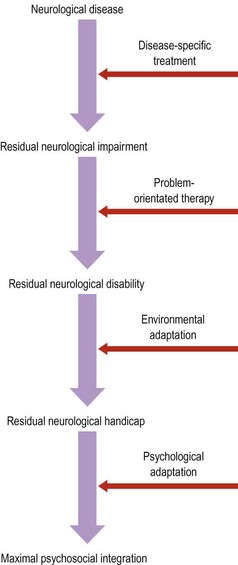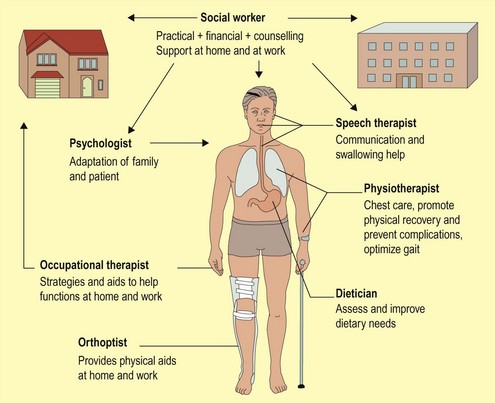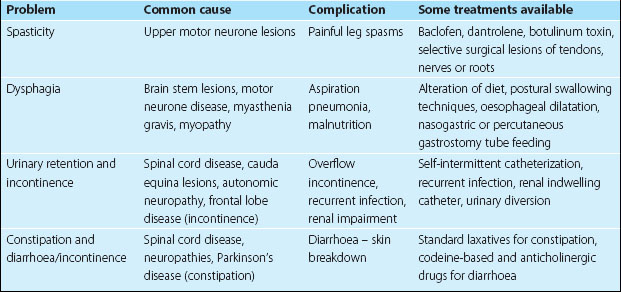Rehabilitation
Introduction
Neurological rehabilitation is aimed at optimizing the level of function of the patient within his or her usual environment. This includes maximizing physical ability, preventing deterioration due to secondary disease, optimizing the patient’s environment, facilitating psychological adaptation to disability and encouraging social integration (Fig. 1). All these facets need to be assessed in providing the most appropriate support. Most of the burden of caring for the disabled falls on their families and the rehabilitation process involves training relatives and providing them with practical, emotional and psychological support.
Recovery in the nervous system
Neurological recovery
Aims of rehabilitation
The aims of rehabilitation are to encourage the facets of recovery described above:
Prevention of complications
Neurological diseases cause deficits, which may predispose to numerous complications. These complications may in themselves be life-threatening or cause a deterioration of the underlying neurological condition. This impairs intrinsic recovery and impedes rehabilitation. Much of the acute management of the neurologically ill patient is in prevention and treatment of these complications (Table 1).
Table 1 Common medical complications of neurological deficit
| Complication | Prevention |
|---|---|
| Pressure sores | Regular turning |
| Contractures | Passive movement of joints through the whole range |
| Thrombosis | Subcutaneous heparin, enhance mobility |
| Ventilatory failure | Ventilatory support |
| Pneumonia | Respiratory exercises, protect airway, especially with feeding |
Promotion of intrinsic recovery
This is primarily the treatment of the underlying cause of the deterioration, for example intravenous steroids speeding recovery from a relapse of multiple sclerosis. Although an active area of research, no therapies have been proven to enhance recovery of the damaged nervous system.
Problem-orientated team approach
In contrast to the disease-orientated medical model, the rehabilitation approach is problem orientated. The approach is by a team, which addresses different facets of the patient’s problems. Rehabilitation is primarily undertaken by specialist therapists (Fig. 2). The role of the doctor is to integrate this activity, and treat certain physical problems that may be amenable to medical or surgical therapy (Table 2). There are four stages in this process:














